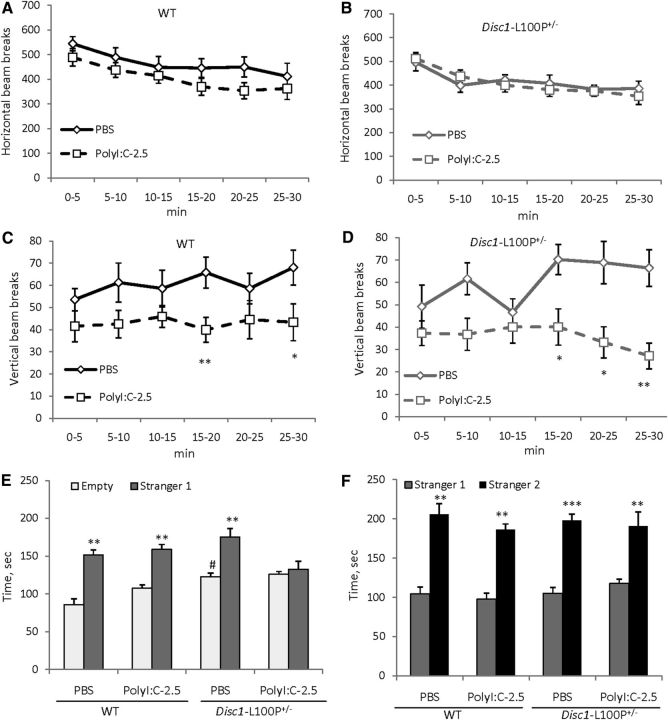Figure 3.
The effects of prenatal immune activation by 2.5 mg/kg of polyI:C on horizontal (A, B) and vertical activity (C, D), social affiliation (E), and social recognition (F) in WT and Disc1-L100P+/− mice. Adult mice of both genotypes born to polyI:C-treated mothers showed significantly reduced vertical activity in the OF (C, D), with no difference in horizontal activity (A, B) (N = 6–14 per each group). *p < 0.05; **p < 0.01, in comparison with control (offspring born to PBS-treated mothers) within each genotype. E, Mean time spent near empty cylinder or unfamiliar mouse (stranger 1). MIA abolished social motivation specifically in Disc1-L100P+/− offspring but not in WT mice. F, Mice of all experimental groups showed intact social memory as they spent more time with a new, unfamiliar mouse (stranger 2). **p < 0.01; ***p < 0.001, in comparison with time spent near the empty cylinder (E) or stranger 1 (F) within each experimental group; #p < 0.01, in comparison with PBS/WT mice. N = 8–12 per each group.

